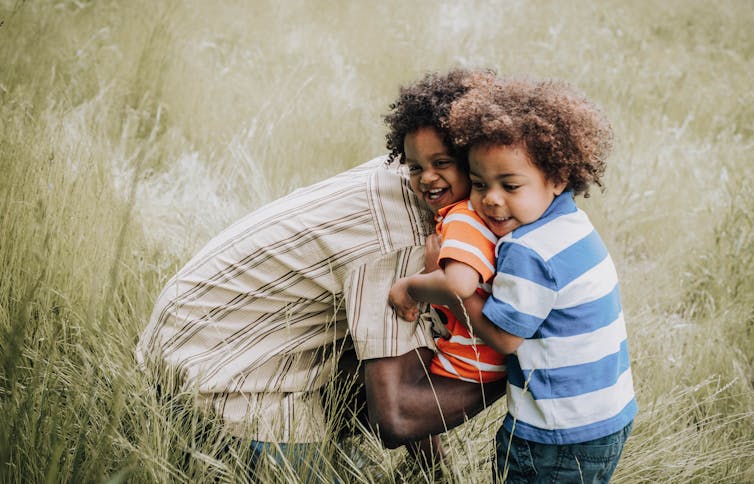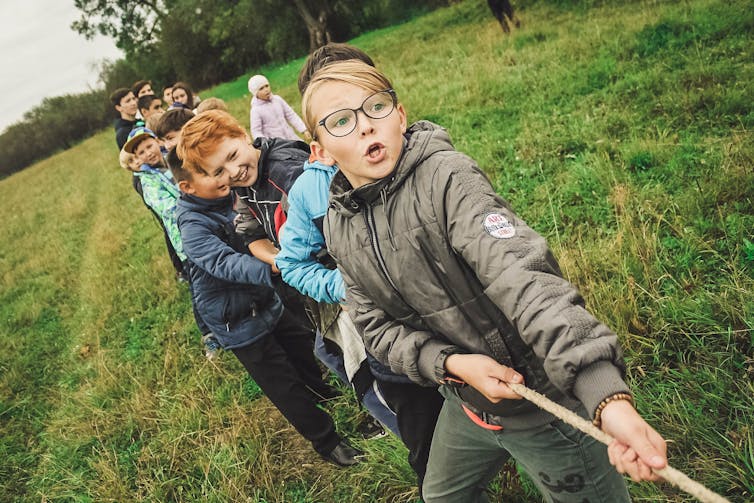You might be one of those people who, since their own childhood, has curated lists of potential names for any children you might have. Or your interest in names might only have emerged because you’re actually expecting your first child. Suddenly, you’ve started noticing first names everywhere.
Your thoughts might travel back to older relatives. In the UK, names like Evelyn or Arthur used to feel dated, but somehow they now feel fresh and beautiful. Parents-to-be might not tell their friends about their favourites: this is their special name, and they don’t want to risk someone stealing it.
However, it is often the case that when little Arthur or Evelyn goes to nursery or school, their name doesn’t seem so original anymore. It turns out, there are in fact three Evelyns in the class, and several Arthurs in the playground, despite the fact that the children’s parents might have never met any Evelyns or Arthurs before having their own.

This article is part of Quarter Life, a series about issues affecting those of us in our twenties and thirties. From the challenges of beginning a career and taking care of our mental health, to the excitement of starting a family, adopting a pet or just making friends as an adult. The articles in this series explore the questions and bring answers as we navigate this turbulent period of life.
You may be interested in:
Jay-Z, Beyoncé, baby Blue Ivy and the art of naming
Before you name your baby, consider this…
A brief history of black names, from Perlie to Latasha
American sociologist Stanley Lieberson shows in his 2000 book, A Matter of Taste: How Names, Fashions, and Culture Change that parents-to-be like the same names at the same time for a variety of reasons – from generational preferences to societal changes and cultural influences – but mostly because since the late 19th century, it has become a matter not of custom, but of taste. As such, it follows the same gradual shifts and reversals as other expressions of fashion.

How names can feel overused
When you think about the names that you find attractive, it is interesting to consider whether any of them are common in your own generation, or in your parents’ generation. The answer to both these questions is probably “no”. Names that we associate with our peers or our teachers often feel too “used” to seem attractive and fitting for a chubby infant.
By contrast, names from our grandparents’ or even great-grandparents’ generation appear more attractive. Research in Denmark shows that two-syllable girls names ending in “a” (like Alma or Clara) have gained in popularity since 2000 – a century after the last time such names peaked.
That 100-year pattern makes sense because you don’t have nearly as many experiences with names from these generations. And though, as young parents, we think that we have hit the jackpot by finding a name that is just as unique as our precious newborn, our tastes are often actually aligned with the tastes of others from our generation. Just like there are generational preferences in furniture, music and hairstyles, so it is with baby names.
Of course, not all popular first names can be traced back to older generations. Sometimes, parents are inspired by popular culture. In Denmark, Liam had never been a common name until the 2000s when it started topping lists of boys names. This must at least in part have to do with the Danish rapper and TV host LOC, AKA Liam O'Connor’s rise to fame. In 1991, meanwhile, 14,087 Kévins were reportedly born in France due largely to two film releases the year before: Kevin Costner’s Dances With Wolves, and Home Alone, whose main protagonist is called Kevin McCallister.
Broader cultural changes also impact name popularity. After the second world war, Denmark was no longer cut off from cultural influences from the US and the UK. As a result, English names such as John and Tommy became extremely fashionable. The civil rights movement in the US, meanwhile, saw popularity in African-American naming patterns shift from biblical options like Elijah and Isaac to names such as Kareem after basketballer and activist Kareem Abdul-Jabbar.
Further, as more of us live in super-diverse societies, parents from different backgrounds are choosing names that can work across cultures. Here, names are often as much about personal taste as they are a means of passing on cultural heritage.

How naming trends can cross borders
As with any trend, name fashions vary from country to country – and within linguistic contexts too. Alfie is one of the most popular boys names in England and Wales, but almost entirely overlooked in the US.
Sometimes, however, a trend can cross borders. Noah and Ella are in every top names list from Denmark, Norway and Sweden to the UK. And chances are that you probably know several Emmas, because this is a name that has taken almost the entire Western world by storm since the late 1900s.
More recently, research shows that the past few years have seen changes in the traditional perceptions of boys’ names and girls’ names. A growing focus on names that can be used regardless of gender has emerged.
Data from birth registrations in England and Wales for 2020 shows that Ivy-Rose was the most highly ranked hyphenated forename for girls (at number 229, with 202 babies so-named). Tommy-Lee was the most highly ranked hyphenated forename for boys (at number 454, with just 87 babies called this). If you really want your future child’s name to be more distinctive among their peers, a two-part moniker might be the way to go.


